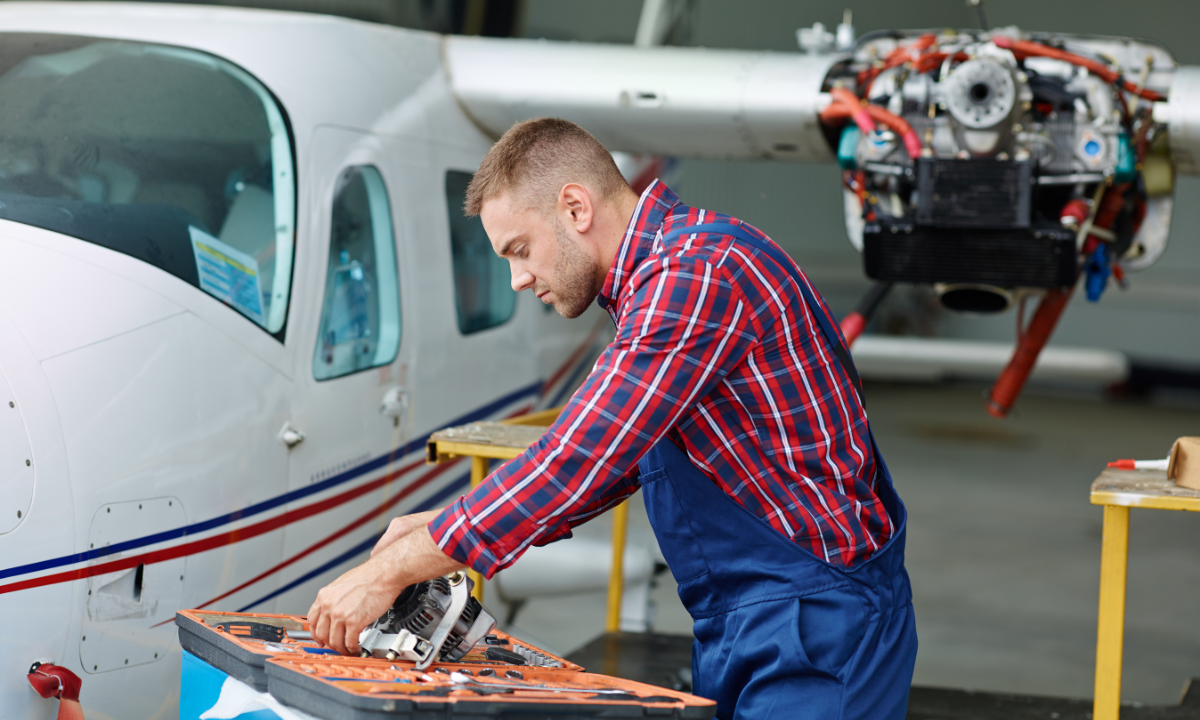Aircraft Maintenance Engineering (AME) is one of the most demanding and rewarding careers in the aviation industry. These professionals play a critical role in ensuring flight safety, operational efficiency, and compliance with aviation regulations. However, the career path of an AME professional is not without hurdles. From stringent training requirements to workplace stress and evolving technology, AMEs face numerous challenges that shape their journey.
In this article, we’ll explore the top challenges faced by AME professionals, how they impact their career growth, and strategies to overcome them.
1. Extensive Training and Licensing Requirements
One of the first challenges that aspiring AME professionals face is the rigorous training process. Unlike many professions where a degree is sufficient, AMEs must undergo specialized education and practical training in approved institutes. After completing the program, they need to clear licensing exams conducted by regulatory authorities such as DGCA (India), EASA (Europe), or FAA (USA).
Obtaining these licenses requires in-depth knowledge of aircraft systems, materials, and maintenance practices, along with hands-on experience. The time-consuming and costly nature of training often discourages many aspirants, making it a major roadblock.
2. High Level of Responsibility and Accountability
The aviation industry thrives on safety. An AME’s signature on a maintenance release certificate signifies that an aircraft is fit to fly. This makes AMEs directly responsible for hundreds of lives on board.
This enormous responsibility can lead to constant pressure and stress. A single error, however small, could result in severe accidents or grounding of aircraft, affecting both safety and airline operations. This high-stakes nature of the job often contributes to mental fatigue and burnout among professionals.
3. Challenging Work Environment
AMEs work in dynamic and physically demanding environments. Their job often requires:
- Long hours in hangars, workshops, or on the tarmac
- Exposure to extreme weather conditions
- Working with heavy tools and equipment
- Performing tasks in confined or elevated spaces
Unlike office-based jobs, aircraft maintenance tasks involve physical strain and irregular shifts, especially during emergencies or unscheduled repairs. This demanding work environment adds to the daily challenges of an AME career.
4. Rapid Technological Advancements
The aviation industry is continuously evolving with cutting-edge technologies such as AI-driven predictive maintenance, composite materials, and advanced avionics systems. While these advancements improve efficiency, they also demand that AMEs constantly upgrade their skills.
Many professionals struggle to keep up with ongoing training programs and certifications. Without staying updated, AMEs risk becoming obsolete in a highly competitive market.
5. Job Competition and Limited Opportunities
Although aviation is a growing industry, the number of licensed AMEs graduating each year often exceeds the job openings available. This creates intense competition for entry-level positions.
Additionally, some regions have limited airlines and MROs (Maintenance, Repair, and Overhaul facilities), restricting employment opportunities. Fresh graduates may face delayed placements or may need to relocate abroad for better prospects.
6. Work-Life Imbalance
The aviation industry operates 24/7, and so do AME professionals. They are required to work in rotational shifts, night duties, weekends, and public holidays. This irregular schedule often affects their personal and family life.
Balancing long hours, stress, and family responsibilities becomes a significant challenge. Over time, the lack of work-life balance can lead to burnout, health issues, and reduced job satisfaction.
7. Physical and Mental Health Strain
Aircraft maintenance involves manual labor, mental focus, and prolonged concentration. AMEs often work in high-noise areas, handle toxic substances, and carry out tedious inspections. The physical toll includes back problems, hearing loss, and fatigue.
Mentally, the constant need to stay alert, precise, and accurate can be exhausting. Stress is further amplified during unexpected breakdowns or strict inspection deadlines, making mental well-being a recurring challenge.
8. Regulatory and Compliance Pressure
The aviation industry is governed by stringent global regulations to ensure passenger safety. AMEs must stay updated with the latest airworthiness directives, service bulletins, and regulatory changes issued by aviation authorities.
Failure to comply with these guidelines can result in penalties, license suspension, or even grounding of aircraft. The constant vigilance required to meet compliance standards adds immense professional pressure.
9. Financial Constraints and Salary Concerns
While aviation careers are often perceived as high-paying, many AMEs—especially in the initial years—struggle with modest salaries compared to the workload and responsibility they carry. The cost of training and licensing is also high, which puts additional financial strain on young professionals.
Salary growth varies widely depending on location, airline, and experience, and not all AMEs achieve the expected financial stability early in their careers.
10. Global Mobility and Relocation Challenges
Many AMEs pursue opportunities abroad due to better pay and exposure. However, their licenses are not always directly transferable. For instance, a DGCA-licensed AME in India must often retrain or revalidate licenses to work in Europe or the U.S.
Additionally, moving abroad involves relocation stress, cultural adaptation, and separation from family, making global career mobility both an opportunity and a challenge.
11. Shortage of Mentorship and Guidance
Young AME graduates often face difficulties due to a lack of proper mentorship. The industry demands practical knowledge, yet freshers may not always receive the hands-on exposure required to build confidence.
Without proper guidance from experienced engineers, many struggle during their early career phase, leading to slow career progression and job dissatisfaction.
12. Unpredictable Career Growth
Unlike some industries with well-defined promotion paths, AME career growth is often slow and unpredictable. Advancement depends on experience, skill upgrades, and organizational needs, not just seniority. Some professionals find themselves stuck in one role for years before moving up.
This uncertainty makes long-term career planning difficult and sometimes discourages young aspirants from pursuing the profession.
Conclusion
The career path of an AME professional is filled with challenges that test both technical skills and emotional resilience. From the rigorous licensing process to the stress of high responsibility, AMEs face obstacles that few other professions encounter. Yet, these challenges also shape them into highly skilled, disciplined, and safety-conscious individuals who form the backbone of the aviation industry.

















